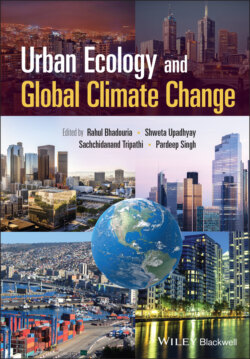Читать книгу Urban Ecology and Global Climate Change - Группа авторов - Страница 41
2.1 Introduction
ОглавлениеEnvironmental factors act as key facilitators for chronic non‐communicable diseases. Similarly, urbanisation and climate change exaggerate the occurrences of such disorders. Over 60% of the world's population resides in cities and towns due to the huge rise in global development, and this proportion is going to increase up to 90% over the next few years (Nieuwenhuijsen 2018). Urban areas are the source of new discoveries and economic development but are also sources of pollution and diseases. With increasing population, human activities are also contributing to a major climate change. Climate changes are one of the defining issues of time and we are at the defining moment. The need for private vehicles is increasing day by day in order to have proper time management, to do work at a faster pace, and to maintain safety. According to the World Heart Federation report on urbanisation and cardiovascular diseases (CVD), human activities are changing with emerging urbanisation which results in pollution, loss of biodiversity, disturbance in ecosystem, and also Earth's temperature has elevated by the range of 0.85 °C approximately withinside the twentieth century and most of this warming came about by the year 1975 (De Blois et al. 2015). Over the last 30 years, the Global warming rate has increased by about 0.18 °C (De Blois et al. 2015). This was triggered by the poor development of infrastructures and less functional public transportation, lack of space, green areas, overuse of natural resources like coal, petroleum, global warming, etc. (Figure 2.1). All these are finally leading to subsequent higher rates of cardiovascular‐related morbidity and mortality (Nieuwenhuijsen 2018). However, newer cardiometabolic treatments and therapeutic approaches can also help to reduce the burden of these syndromes (De Blois et al. 2015). To bring cardiometabolic syndrome‐related risks under control, there are certain opportunities as well as challenges which have been described in this chapter.
Figure 2.1 An overview of the various factors that are responsible for urbanisation and climate change finally leading to cardiometabolic syndrome.
